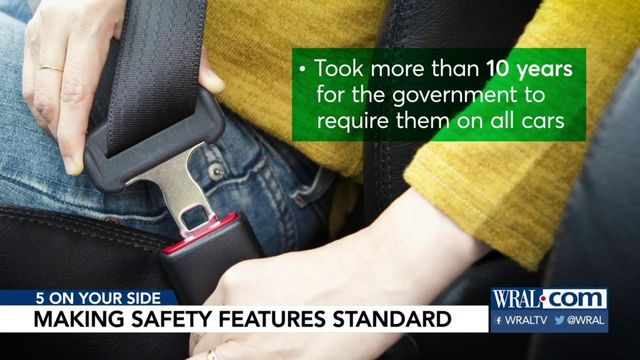Car technology is saving lives - but not fast enough
Advances in vehicle safety technology like forward collision warning and automatic emergency braking can really make a difference -- but not everyone has access to the lifesaving features.
Posted — UpdatedNine out of every 10 serious crashes are linked to driver error. According to Consumer Reports, the features meant to correct driver error are standard in only 44 percent of 2019 model cars.
Experts want all cars have to have lifesaving technology as standard equipment, but the process to obtain that is ongoing.
According to Consumer Reports, slow-to-market safety technology is too common. For example, Consumer Reports first tested seatbelts in 1956, but it took more than 10 years for the government to require them on all cars.
Since 1960, more than 300,000 lives have been saved because of seatbelts.
Seatbelt technology is evolving even in present day -- like advancement of the two parts of a seatbelt that work during a crash, the pretensioner and the limiter.
The pretensioner pulls the belt tight so you don't fly forward, and the load limiter lets out a little bit of slack so that you don't get hurt by the tightening belt.
That important technology, however, is still not standard on all cars and isn't always available in backseats.
As for what's next in vehicle safety, Consumer Reports says we might be looking to the cloud. Vehicle to vehicle technology, or V2V, allows cars to communicate with each other and coordinate traffic signals to help avoid crashes.
Related Topics
• Credits
Copyright 2024 by Capitol Broadcasting Company. All rights reserved. This material may not be published, broadcast, rewritten or redistributed.






